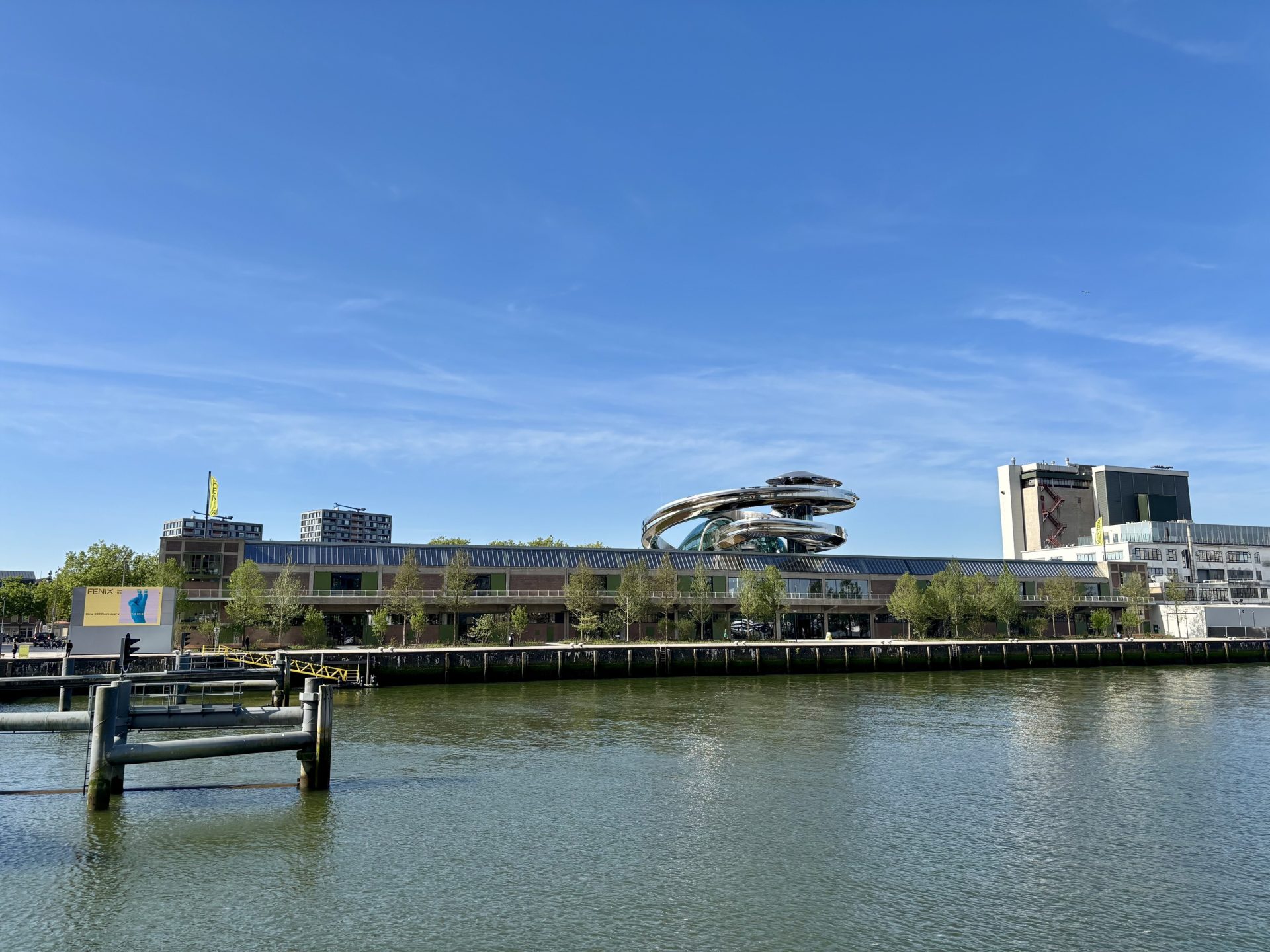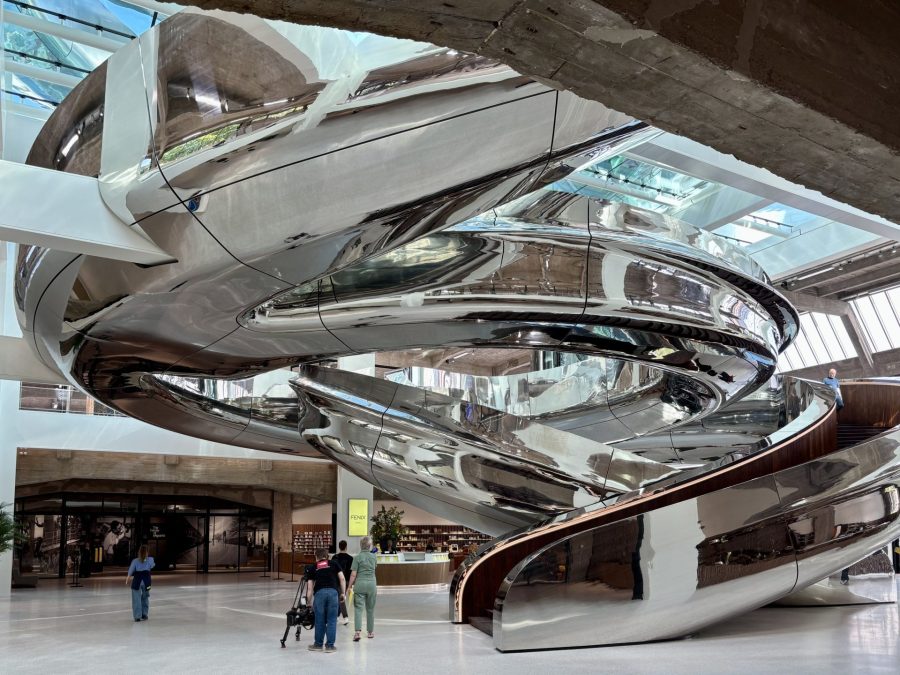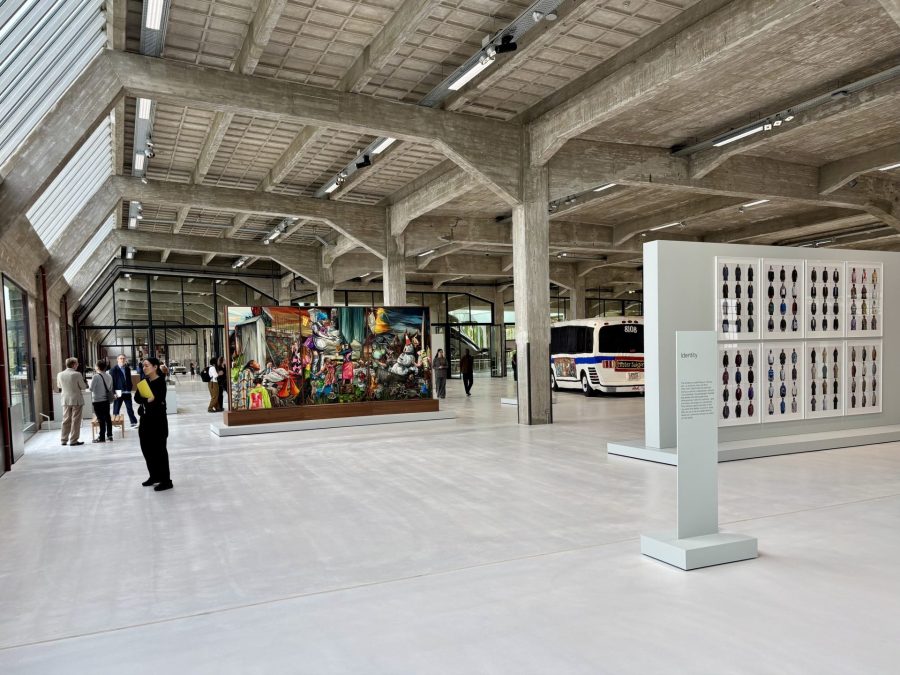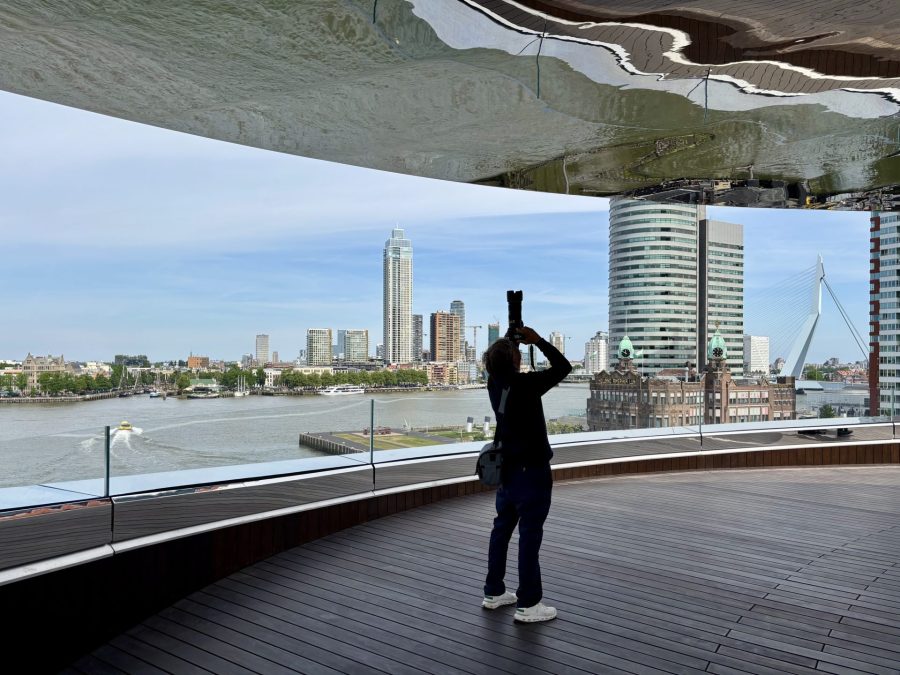Shiny Tornado: FENIX Museum of Migration in Rotterdam

‘Is that a water slide?’ The architecture guides of architour have heard this question countless times since a shiny silver, winding, twisted double helix was installed on top of the old Fenix warehouse in Rotterdam. From a distance, one might indeed assume that the swirling tubes lead to a water park. In reality, this is – simply put – probably the most elaborate staircase in the Netherlands. It provides access to the exhibition halls of the new FENIX Museum of Migration and leads to a viewing platform 24 metres above the ground.

The Tornado lands in the atrium of the Fenix Museum. ©Anneke Bokern / architour
Migration is everyday
The San Francisco warehouse was built in 1923 and, at 360 metres long, was the largest building of its kind in the world at the time. It was commissioned by the Holland America Line shipping company, which transported millions of people, including many emigrants, from the Wilhelminapier (located directly opposite) to America from the end of the 19th century onwards. In 1948, the central section of the warehouse burned down, whereupon the two remaining sections of the building were renamed Fenix I and Fenix II. After years of temporary use, Fenix II was sold in 2018 to the philanthropic foundation Droom en Daad, which wanted to transform the warehouse into a migration museum. Chinese architect Ma Jansong (MAD Architects) was commissioned to design the mirrored eye-catcher, while Rotterdam-based Bureau Polderman took care of the renovation of the existing building.
Contrary to what one might expect, FENIX, which opened at the end of May, does not feature a historical exhibition, but displays art on the theme of migration. The ground floor houses a spacious atrium with a café and museum shop, flanked by two halls with a suitcase labyrinth and a photo exhibition. The main area, however, is on the first floor, where no less than 6,000 square metres are filled with works by artists ranging from Holbein and Rembrandt to Steve McQueen and Francis Alÿs, interspersed with historical objects such as a piece of the Berlin Wall. The message is that migration is everyday and omnipresent.

Spacious exhibition halls in the old warehouse. ©Anneke Bokern / architour
Architectural promenade
Access to the exhibition is provided by the so-called Tornado, which winds its way into the middle of the atrium as an extremely photogenic act of violence. Enveloped in 297 polished, double-curved stainless steel panels and lined with Keroby wood planks on the inside, it is both a means of access and an architectural promenade. On the way up, stairs and ramps alternate and the two routes intersect several times, so that visitors have to make decisions again and again – maybe a somewhat too obvious metaphor for migration journeys. Once at the top, visitors stand under a stainless steel cap, where they can marvel at the spectacular reflections of the surrounding skyscrapers.

The ascent is accompanied by spectacular reflections. ©Anneke Bokern / architour
As showy as the tornado may be, the exhibition is exceptionally well curated and presented, conveying its message without being preachy. As you stroll through the spacious, light-filled halls, (newly added) windows offer views of the city, anchoring the theme in the here and now.

Photo moment on top of the Tornado. ©Anneke Bokern / architour
Of course, all this is only possible because the Droom en Daad Foundation, founded by a wealthy shipping family, has pumped a lot of money into the old warehouse and the collection. However, there are worse things to do with your millions. In any case, Rotterdam is once again blessed with a new glossy icon – and fortunately it is not just a water slide.
Text by: Anneke Bokern, Architour





